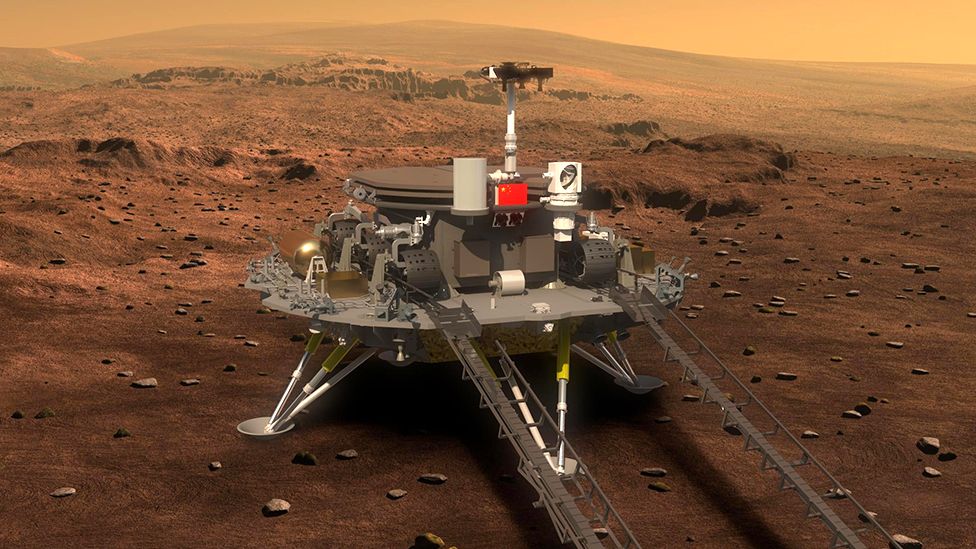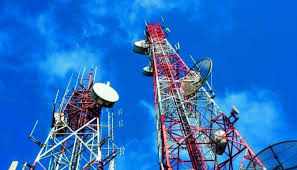China lands its Zhurong rover on Mars

China has successfully landed a spacecraft on Mars, state media announced early on Saturday.
The six-wheeled Zhurong robot was targeting Utopia Planitia, a vast terrain in the planet's northern hemisphere.
The vehicle used a combination of a protective capsule, a parachute and a rocket platform to make the descent.
The successful touchdown is a remarkable achievement, given the difficult nature of the task.
Only the Americans have really mastered landing on Mars until now. All other countries that have tried have either crashed or lost contact soon after reaching the surface.
Chinese President Xi Jinping congratulated the mission team's "outstanding achievement" in a special message.
"You were brave enough for the challenge, pursued excellence and placed our country in the advanced ranks of planetary exploration," he said.
The robot officially landed at 07:18 on Saturday, Beijing time (Friday 23:18 GMT), according to state media.
It took 17 minutes to unfold its solar panels and send a signal back to Earth.
Zhurong, which means God of Fire, was carried to Mars on the Tianwen-1 orbiter, which arrived above the planet in February.
The probe then spent time surveying Utopia, taking high-resolution images to pinpoint the safest place to put the rover down.
The aim with all such ventures is to pick a spot that is devoid of imposing craters and where the landscape isn't covered in large boulders.
Chinese engineers would have had to follow the landing effort with a time lag.
The current distance to Mars is 320 million km, which means radio messages take almost 18 minutes to reach Earth.
Every stage of the Zhurong's approach to the surface therefore would have been managed autonomously.
The landing architecture was a familiar one.
The rover was encased in an aeroshell for the initial phase of the descent. This capsule's dive to the surface was slowed by pushing up against the Martian air.
The heat this generated was managed by a forward-facing shield.
At a predetermined time, a parachute opened to reduce the velocity still further.
Finally, the Zhurong robot broke away on a rocket-powered bench for the manoeuvres that took it safely to the ground.
Landing on Mars is always a daunting challenge, but China would have had confidence going into the procedure, given the great competence it has shown in its space endeavours of late.
This is a nation that has been putting rovers on the Moon, and bringing lunar samples back to Earth. This month it launched the first segment of a space station above our planet.
Now that Zhurong has got down successfully, scientists will try to get at least 90 Martian days of service out of it, studying the local geology. A day, or Sol, on Mars lasts 24 hours and 39 minutes.
The robot looks a lot like the American space agency's (Nasa) Spirit and Opportunity vehicles from the 2000s. It weighs some 240kg and is powered by fold-out solar panels.
A tall mast carries cameras to take pictures and aid navigation; five additional instruments will help assess the mineralogy of local rocks and look for any water-ice below ground.











Comments